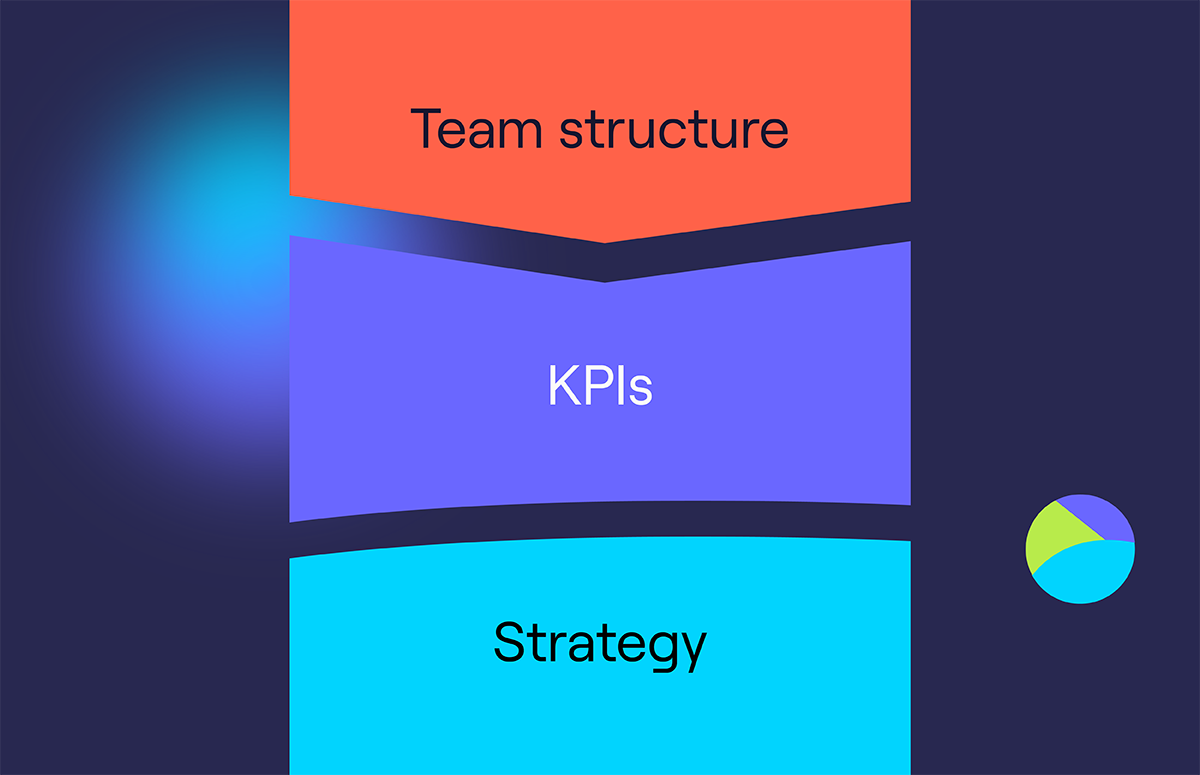Lead Routing Tools (2026): The Definitive Buyer’s Guide
TL;DR
Lead routing succeeds when data quality, speed-to-lead, and governance work together. Even the smartest routing rules will misfire if your enrichment and lead-to-account matching is shaky.
Who this page is for: SalesOps, MarOps, or RevOps leaders who own SLAs, conversion rates, and CRM hygiene.
Quick picks by scenario:
- Need accuracy & compliance at source: Use Cognism enrichment feeding CRM routing.
- Complex Salesforce hierarchies: Use LeanData (with Cognism data upstream).
- Speed-to-meeting on forms: Use Chili Piper (plus enrichment).
- HubSpot-first & simple territories: Use HubSpot Workflows (backed by enrichment).
- Salesforce-first with in-house admin skill: Use Salesforce flows & territory management.
- Custom cross-app orchestration: Use Tray.io or Workato.
- Warehouse-first traits to CRM: Use Hightouch or Segment.
Field note: Fix data inputs before tinkering with rules. The payoff is faster first response, fewer reassignments, and happier reps.
Side-by-side comparison (scannable)
The top lead routing tools (2025)
1. Cognism: the data foundation your routing rules deserve
Best for: B2B teams that want precise firmographic/contact data, GDPR-first enrichment, and higher match rates powering fair, fast lead distribution.
Why it’s strong for routing: Better data in equals fewer mismatches out. Accurate company and contact enrichment strengthens lead-to-account matching, territory rules, and SLAs, so reps get the right leads the first time.
Key feature 1: Contact data enrichment via API and CSV to keep routing fresh
Cognism's API gives you direct access to our powerful data engine. Improve your lead routing by auto-enriching inbound leads or embedding data into your CRM or product. CSV enrichment updates your existing database. Cognism will find the best match based on the provided data points.
%20(1).webp?width=600&height=382&name=4x-Enrich-ads-landing-2%20(4)%20(1).webp)
Key feature 2: Data as a Service (DaaS) to power your GTM infrastructure
Cognism's DaaS optimises lead routing through instant or scheduled batch access to verified B2B data. Keep your sales and marketing platforms accurate with real-time data updates, avoiding wasted time and eroded trust caused by outdated contact records.
.webp?width=500&height=383&name=Data-as-a-service%20imagery-06%20(1).webp)
Key feature 3: Up-to-date, quality data for companies and decision-makers
The Cognism data fusion engine is responsible for sourcing, verifying, and delivering data in a consumable format for you. Our data goes through a five-step process that spans AI and machine learning, verification, compliance checks, human validation, and customer feedback, to provide you with extensive coverage and accuracy..webp?width=500&height=500&name=scoring_matching_1x-1%20(compressed).webp)
Key feature 4: Native integrations with HubSpot, Salesforce and more
The wide range of Cognism integrations optimise your routing process by connecting your CRM or outreach tools directly to our accurate database. Never miss with contacts that are always up-to-date and routed to the right rep..webp?width=600&height=504&name=cognism%20chrome%20extension%20export%20(compressed).webp) 2. LeanData: complex Salesforce logic
2. LeanData: complex Salesforce logic
Best for: Salesforce-heavy orgs with parent/child hierarchies and intricate ownership.
Why it’s strong: Graph-based matching, visual builder, and robust auditability reduce misroutes in complex orgs.
/Competitors%20and%20other%20tools/Still%20to%20approve/Leandata/leandata-lead-routing-graphic.webp?width=500&height=425&name=leandata-lead-routing-graphic.webp)
Key features
- Graph-based matching across leads, contacts, accounts/opps.
- Visual routing builder with exception paths.
- Hold-until-enriched gates.
- ABM-aware routing (owned accounts, lookalikes, territory overlays).
- Round-robin & queueing with load balancing.
- Book-a-meeting actions; deep Salesforce integration.
- Testing/simulation, versioning, and audit logs.
- Error handling, retries, and alerts.
3. Chili Piper: speed-to-lead from the form
Best for: Teams laser-focused on “instant qualify + instant calendar”.
Why it’s strong: Form concierge + availability-aware handoff + ownership logic = meetings booked at the moment of intent.
/Competitors%20and%20other%20tools/Still%20to%20approve/Chili%20Piper/chili-piper-platform-overview.webp?width=600&height=364&name=chili-piper-platform-overview.webp)
Key features
- Form Concierge: instant qualification & calendar pop on submit.
- Ownership logic: territory, account owner, round-robin.
- Availability-aware handoff with queue fallbacks.
- Inbound router for web, chat, SDR handovers.
- No-show defences: reminders and re-routing.
- Calendar/meeting integrations (Google/Microsoft, Zoom, etc.).
- Plays nicely with enrichment (pre/post-submit).
- Analytics on meeting rate & time-to-book.
Considerations: Ensure fields used for qualification are enriched/validated to avoid false positives.
4. HubSpot: workflows & native assignment
Best for: HubSpot-centric stacks with straightforward territories.
Why it’s strong: Clean workflow builder and queues keep ownership rules easy to maintain.
/Competitors%20and%20other%20tools/Still%20to%20approve/HubSpot/hubspot-workflows-template.webp?width=600&height=331&name=hubspot-workflows-template.webp)
Key features
- Workflow-based routing on any contact/company property.
- Round-robin across teams or queues; ownership fallbacks.
- Inbox & meeting ownership alignment with assignment rules.
- Form submission triggers; property enrichment via apps.
- Sandbox & version history for safer changes.
- Native reporting on response time, pipeline & SLAs.
Considerations: Pair with enrichment for accuracy; model exceptions/fallbacks to prevent queue jams.
5. Salesforce: assignment rules, flows, omni-channel
Best for: Salesforce-first teams happy to build natively.
Why it’s strong: Sales territory management, flows, and omni-channel cover most routing patterns without extra tools.
/Competitors%20and%20other%20tools/Still%20to%20approve/Salesforce/salesforce-lead-assignment-rules.webp?width=600&height=319&name=salesforce-lead-assignment-rules.webp)
Key features
- Assignment rules & territory management for region/segment logic.
- Flows for advanced branching, timers, and exceptions.
- Omni-channel for skills and queue-based routing.
- Apex extensibility and AppExchange add-ons.
- Sandboxes, change sets, audit logs & FLS for governance.
Considerations: Requires admin/dev capacity; test heavily in sandbox to avoid “rules sprawl”.
6. Tray.ai: iPaaS routing orchestration
Best for: Custom real-time workflows across apps/APIs.
Why it’s strong: Webhooks, retries, and data transforms let you orchestrate enrichment and routing across your stack.
/Competitors%20and%20other%20tools/Still%20to%20approve/Tray.ai/tray.ai-templates.webp?width=600&height=379&name=tray.ai-templates.webp)
Key features
- Real-time webhooks and event listeners.
- Waterfall enrichment (call multiple data sources, reconcile).
- Conditional logic with retries, error paths & alerting.
- Transforms & normalisation for consistent fields.
- Reusable connectors (forms, chat, calendars, SEP, MAP, CRM).
- Secrets management and run histories.
- Testing workspaces & promotion flows.
Considerations: Usage-based costs scale with tasks; monitor webhook/API limits.
7. Hightouch: CDP & reverse ETL
Best for: Warehouse-first teams pushing unified traits/ownership to CRM.
Why it’s strong: Identity resolution + trait syncs trigger routing without brittle app-by-app logic.
/Competitors%20and%20other%20tools/Still%20to%20approve/Hightouch/hightouch-composable-cpc.webp?width=600&height=265&name=hightouch-composable-cpc.webp)
Key features
- Identity resolution (web, product, CRM).
- Audience/trait building for ICP & intent.
- Reverse ETL, near-real-time syncs to CRM ownership/priority fields.
- Field mapping/transformations to standardise values.
- Versioned models with governance & approvals.
- Broad destinations (CRM, MAP, ads, chat, calendars).
- Observability: sync health, drift alerts, lineage.
Considerations: You’ll still need a rules engine (native or iPaaS) to make assignment decisions.
Choosing the right tool (decision flow)
- Most leads go to the wrong owner? Prioritise data quality: Cognism enrichment and your rules engine (LeanData/SF/HubSpot).
- “Book a meeting now” is the goal? Chili Piper and data enrichment at or immediately after submission.
- Deep Salesforce & ABM complexity? LeanData or Salesforce flows and Cognism upstream.
- HubSpot-native & simple territories? HubSpot workflows and enrichment.
- Warehouse-first? Hightouch sends traits to CRM; route natively or via iPaaS. Or use Cognism’s DaaS offering.
What is lead routing?
Lead routing assigns inbound leads to the right rep/SDR team using routing rules (or AI) based on traits like industry, employee size, geography, account ownership, intent and product fit.
Core methods for lead routing include round-robin, territory-based, account-based, skills-based, queue/priority-based, and AI propensity.
Where routing lives: CRM (Salesforce/HubSpot), MAP (Marketo/HubSpot), CDP/warehouse (Segment/Hightouch), or GTM/iPaaS platforms.
Why lead routing matters now
- Conversion & SLAs: Minutes matter.
- ICP & ABM alignment: Routing is where ICP becomes an enforceable policy.
- Data dependency: Enrichment, de-duplication and lead-to-account matching are the levers behind accurate lead assignment.
Evaluation criteria (use this checklist)
- Data & matching: Coverage, firmographics/technographics, intent, de-dupe, account matching, consent metadata.
- Rules engine: Exceptions, tiers, fallbacks, “hold-until-enriched”, SLA-aware queues.
- Integrations: Salesforce/HubSpot depth, MAP, chat, calendars, forms, APIs/webhooks.
- Scalability & latency: Real-time vs batch, throughput, retry logic, queue health.
- Governance: Audit logs, versioning, sandbox, change control and ownership.
- AI & automation: Scoring, next-best-rep, territory predictions.
- UX & admin: No-code builder, simulation/test mode, alerting.
- Security & compliance: SOC 2 Type II, GDPR, data residency.
- Pricing: Seats vs usage, data credits, and implementation effort.
- Support: SLAs, onboarding, and enablement resources.
More advanced lead routing playbooks
- Account-based routing: Prioritise owned accounts and lookalikes; respect parent/child hierarchies; prevent poaching.
- Intent-driven fast lanes: High-intent accounts skip queues and trigger immediate booking.
- Partner & channel leads: Dual-route to partner managers with compliance guardrails.
- Chat & conversational routing: Apply the same territory/ownership logic used for forms.
- Edge cases: Personal emails, unknown industry/country, enrich, fuzzy match; if unknown, route to triage with an automated data capture follow-up.
“RevOps’ job is to reduce manual workarounds and keep data accurate so routing decisions are trusted.” - RevOps Hub interview with Navin Persaud, 1Password.
Common pitfalls & how to avoid them
- Email domain ≠ account: Use person-to-account matching with company name & geography; don’t rely solely on the domain.
- Enrichment delays = missed SLAs: Add a hold-until-enriched step or a time-boxed triage queue with retries.
- No sandbox/testing: Simulate with historical data and run dark-launch comparisons before flipping ownership fields.
- Rules sprawl: Version your logic, keep a change log, and assign a single owner for approvals.
Pricing & total cost of ownership (TCO): quick ranges & gotchas
Pricing changes regularly; treat these as directional and confirm with vendors.
- Chili Piper: Transparent, calculator-based pricing by product; meeting tools from $15 per user/month seen publicly.
- LeanData: Official site lists plans; third-party marketplaces show annual per-user ballparks (e.g., Standard/Advanced tiers). Expect subscription and volume/edition factors.
- HubSpot (Workflows/assignment): Included within Sales/Marketing Hubs; 2025 guides show Pro-tier starting points (e.g., Sales Hub Pro per-seat; Marketing Hub Pro from $890/mo for 3 seats).
- Salesforce native (Flows/Territories): Base CRM licences plus add-ons (e.g., Sales Engagement, Maps) are priced per user/month; total varies by edition and add-ons.
- Tray (iPaaS): Usage-based model (tasks) with plan and usage; marketplace benchmarks show mid-five-figure annual medians for enterprise deployments.
- Hightouch: Usage-based plans; public pricing pages for reverse ETL/CDP outline tiers.
Hidden costs to watch
- Webhook/API rate limits, retries, and error handling.
- iPaaS task consumption (spikes during fan-out enrichment).
- Extra sandboxes & promotion workflows.
- Admin time for audits, field normalisation, and reassignments.
Security & compliance
- Privacy by design: Ensure GDPR-compliant processing is in place.
- Access & auditability: SSO for admins, versioned rule changes, audit trails.
- Regional routing: Respect data residency and regional go-to-market splits when applicable.
FAQs
No. AI helps with propensity and triage, but clean enrichment + clear rules outperform guesswork.
Accurate, compliant firmographic and contact data (plus consent metadata) increases match rates and cuts bounce-backs, so rules work as intended.
Yes, this is a common pattern: Cognism for data quality, Salesforce/HubSpot/LeanData for routing logic, Chili Piper for real-time booking.
Attempt enrichment and fuzzy matching on name/company from the form. If still unknown, route to triage with an automated nudge to capture work email and company.
Conclusion & your next steps
If you remember one thing, remember this: data quality is the routing superpower. Pick any rules engine; without clean inputs, you’ll misroute and slow down.
Recommended next steps:
- Run a quick data quality audit of your inbound and CRM records.
- Deploy Cognism enrichment and lead-to-account matching.
- Build routing (LeanData/Salesforce/HubSpot/Chili Piper) with fallbacks and SLAs.
- Pilot, measure, iterate.
/CTAs%20(SEO)/high-intent-cta-basic-data-sample-webp.webp?width=1376&height=528&name=high-intent-cta-basic-data-sample-webp.webp)
/Lead%20routing%20tools/lead-routing-tools-resource-card.webp)

